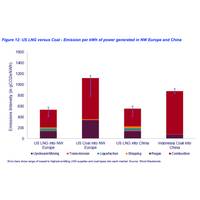EIA report: Lower Prices Lead to Decline in Oil, Gas Reserves
U.S. crude oil proved reserves declined 4.7 billion barrels (11.8%) from their year-end 2014 level to 35.2 billion barrels at year-end 2015, according to U.S. Crude Oil and Natural Gas Proved Reserves, Year-end 2015, released today by the U.S. Energy Information Administration (EIA). U.S. natural gas proved reserves decreased 64.5 trillion cubic feet (Tcf), a 16.6% decline, reducing the U.S. total to 324.3 Tcf at year-end 2015.
The significant reduction in the average price of both oil and natural gas between 2014 and 2015 resulted in more challenging economic and operating conditions, an important factor in determining proved reserves. These price developments, reflected in a nearly 50% decline in average West Texas Intermediate crude oil spot prices (from $95 per barrel in 2014 to $50 per barrel in 2015) and a more than 40% decline in the natural gas spot price at the Louisiana Henry Hub (from $4.55 per million Btu in 2014 to $2.62 per million Btu in 2015) led to reduced drilling activity and downward revisions in proved reserves across a broad range of U.S. producers in 2015.
Changes in proved reserves between year-end 2014 and year-end 2015 are summarized in the attached table.
New Mexico had the largest net increase in proved reserves of crude oil and lease condensate of all states in 2015, mostly from development of the Wolfcamp shale and Bone Spring plays in southeastern New Mexico's portion of the Delaware Basin.
Crude oil and lease condensate extensions to existing fields were highest in Texas and North Dakota in 2015. However, as a result of downward revisions, both states experienced a net reduction in proved reserves.
In 2015, Ohio added more than 5 Tcf of natural gas proved reserves (in the Utica/Point Pleasant Shale play), and surpassed Arkansas and the Gulf of Mexico to become the ninth-largest natural gas reserves state.












